Time Travel Research Center © 2005 Cetin BAL - GSM:+90 05366063183 - Turkey / Denizli
Relativity and Black Holes
Curvature and Geometry
Perhaps you have heard it said that according to relativity theory, spacetime is "bent" or "curved" in the presence of mass. Let's explore what this really means.
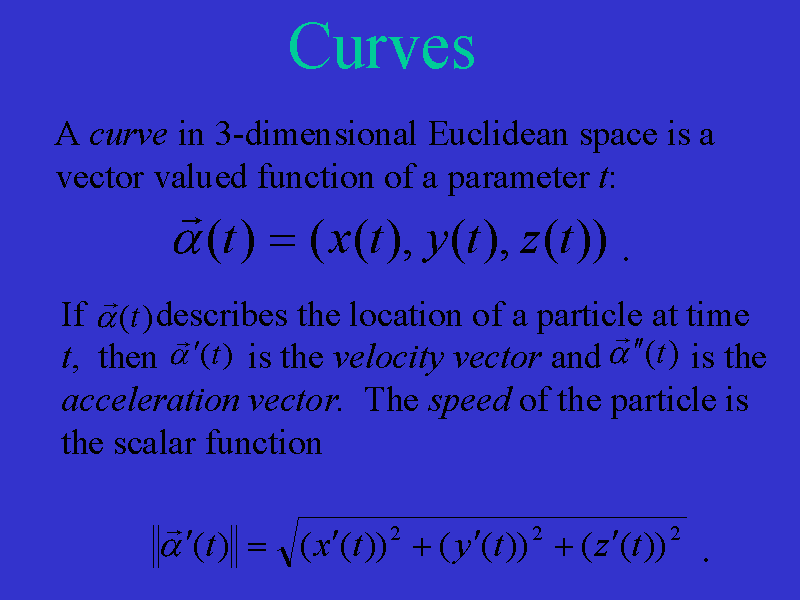
A curve in 3-dimensional Euclidean space is a vector valued function of a parameter t:
![]()
If ![]() describes the location of a particle at time t, then
describes the location of a particle at time t, then
![]() is the velocity vector and
is the velocity vector and
![]() is the acceleration vector. The speed of the particle is
the scalar function defined as the magnitude of the velocity function:
is the acceleration vector. The speed of the particle is
the scalar function defined as the magnitude of the velocity function:
![]()
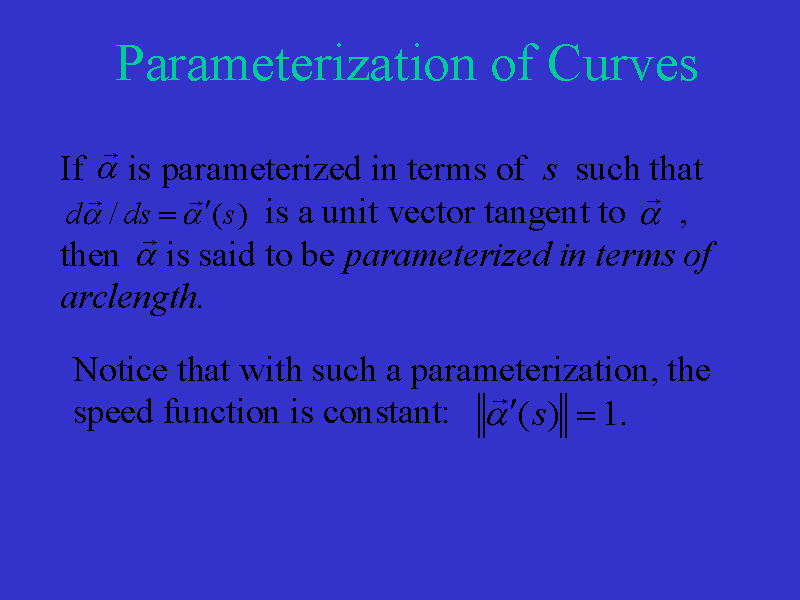
If
![]() is parameterized in terms of s such that
is parameterized in terms of s such that
![]() is a unit vector tangent to curve
is a unit vector tangent to curve
![]() ,
then
,
then
![]() is said to be parameterized in terms of arclength. Notice that with
such a parameterization, the speed function is a constant:
is said to be parameterized in terms of arclength. Notice that with
such a parameterization, the speed function is a constant:
![]() .
We can think of
.
We can think of
![]() as describing a particle that moves uniformly along the curve
as describing a particle that moves uniformly along the curve
![]() .
.
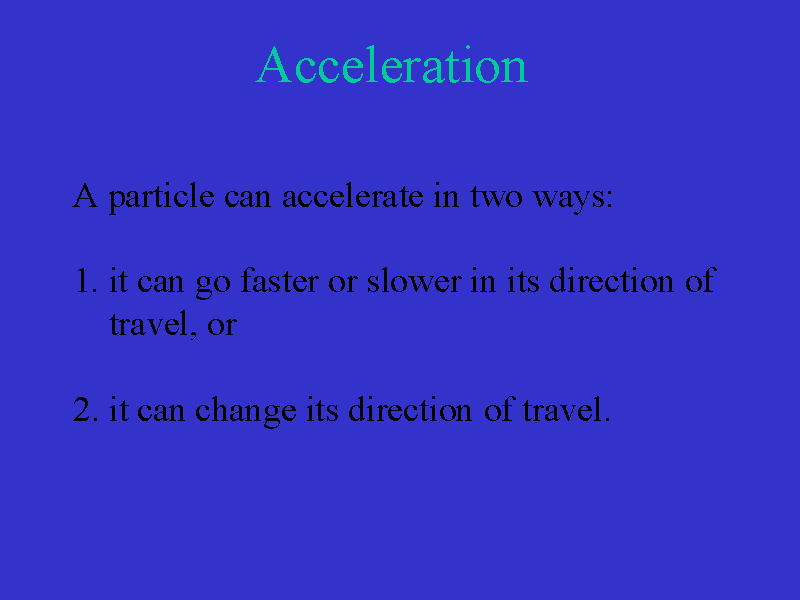
In general, a particle traveling in space can accelerate in two fundamental ways:
- it can go faster or slower in its direction of travel, or
- it can change its direction of travel.
This means that if
![]() is a particle's position at time t, then its acceleration
is a particle's position at time t, then its acceleration
![]() can be written as
can be written as

a sum of a vector in the direction of travel and a vector perpendicular
to the direction of travel. The component of acceleration in the direction
of travel reflects how the particle is speeding up or slowing down. The
other component reflects how the particle is changing direction. Therefore
if we parameterize
![]() in terms of arclength, then the only component of acceleration will be the
component which reflects a change in direction. When we discuss
curvature, this is what we are interested in.
in terms of arclength, then the only component of acceleration will be the
component which reflects a change in direction. When we discuss
curvature, this is what we are interested in.
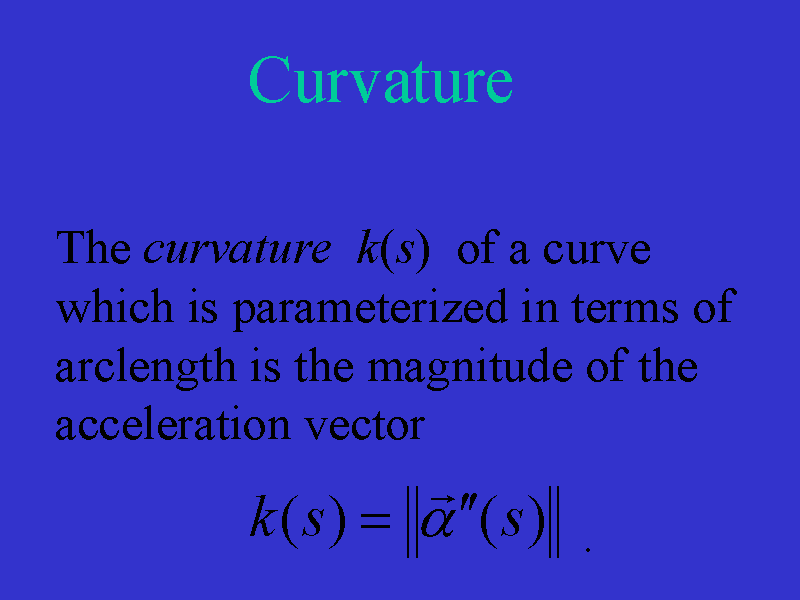
The curvature k(s) of a curve
![]() which is parameterized in terms of arclength is the magnitude of the
acceleration vector
which is parameterized in terms of arclength is the magnitude of the
acceleration vector
![]() .
.
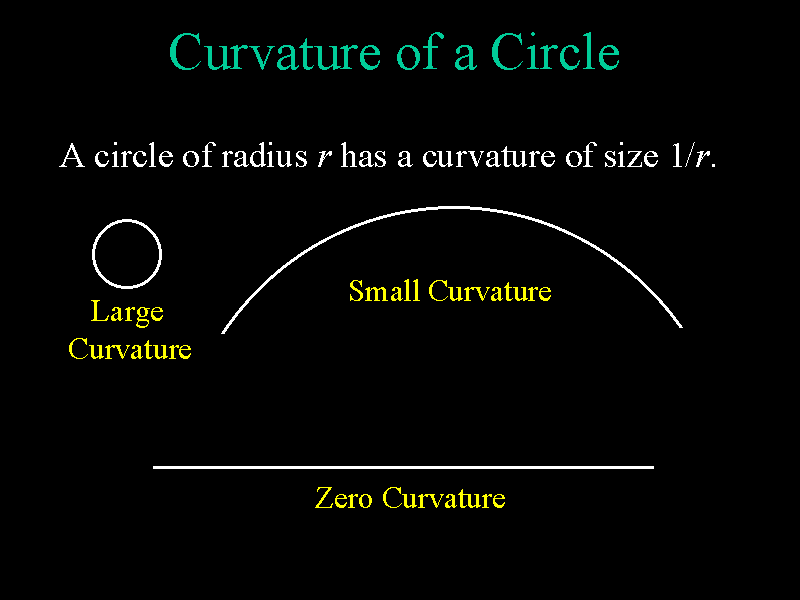
A circle of radius r has a curvature of size 1/r. Therefore, small circles have large curvature and large circles have small curvature. The curvature of a line is 0. In general, an object with zero curvature is "flat."
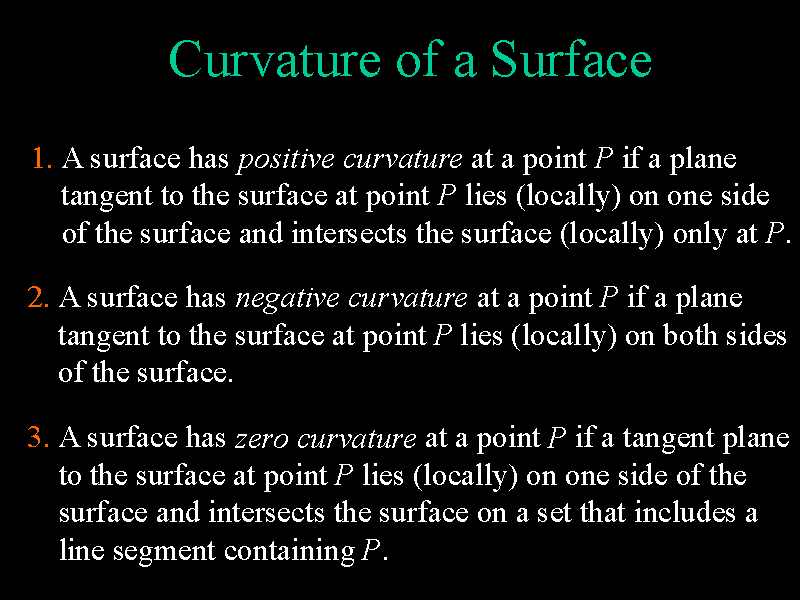
Informally, we can talk about the curvature of a surface in terms of how the surface interacts with tangent planes.
- A surface has positive curvature at a point P if a plane tangent to the surface at point P lies (locally) on one side of the surface and intersects the surface (locally) only at P.
- A surface has negative curvature at a point P if a plane tangent to the surface at point P lies (locally) on both sides of the surface.
- A surface has zero curvature at a point P if a tangent plane to the surface at point P lies (locally) on one side of the surface and intersects the surface on a set that includes a line segment containing P.
 >
>
For example, a plane tangent to a sphere lies entirely on one side of the sphere, and so a sphere is of positive curvature. In fact, a sphere of radius r is of curvature 1/r2.
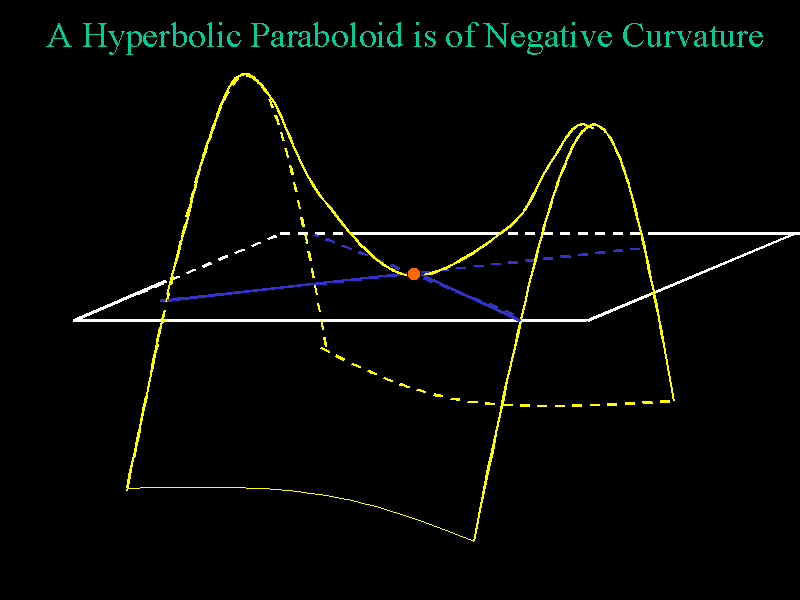
A saddle shaped surface (or more precisely, a hyperbolic paraboloid) is of negative curvature. A tangent plane lies on both sides of the surface. Here, the point of tangency is red and the points of intersection are blue. Pringles potato chips are familiar examples of sections of a hyperbolic paraboloid.

A cylinder is of zero curvature since a tangent plane lies on one side of the cylinder and the points of intersection (here in blue) are a line containing the point of tangency. Also, of course, a plane is of zero curvature.

If two surfaces have the same curvature, we can smoothly transform one into the other without changing distances (the transformation is called an isometry). For example, a sheet of paper (used here to represent a curvature zero plane) can be rolled up to form a cylinder (which also has zero curvature). However, we cannot role the paper smoothly into a sphere (which is of positive curvature). For example, if we try to giftwrap a basketball, then the paper will overlap itself and have to be crumpled. We also cannot role the paper smoothly over a saddle shaped surface (which is of negative curvature) since this would require ripping the paper.
The curvature of a surface is also related to the geometry of the surface.
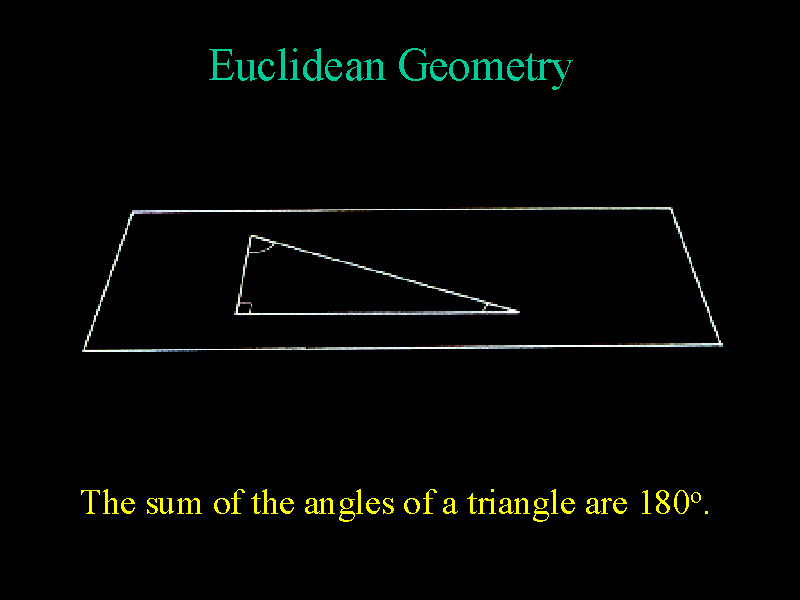
For example, on a surface of zero curvature, the geometry is the usual Euclidean geometry in which the Parallel Postulate holds and the sum of the angles of a triangle are 180o.
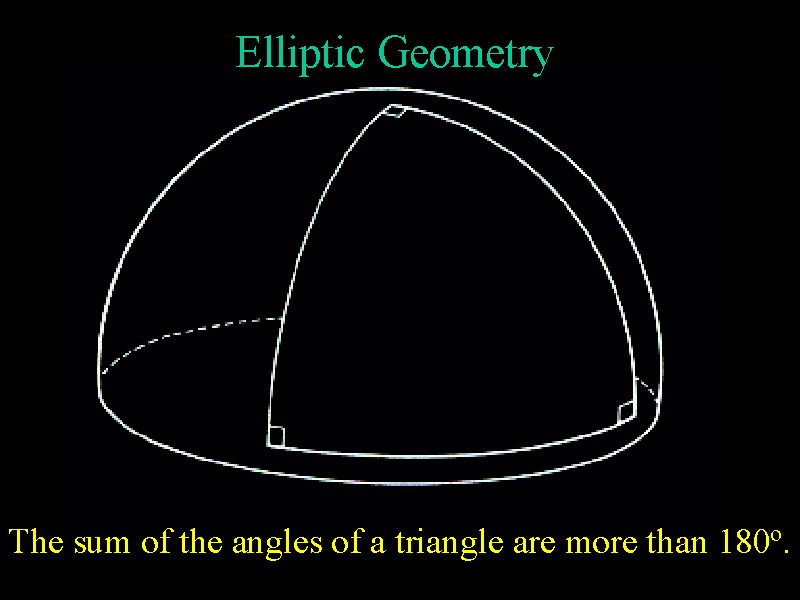
On a surface of positive curvature, the geometry is called elliptic geometry. In this case, the sum of the angles of a triangle is greater than 180o.
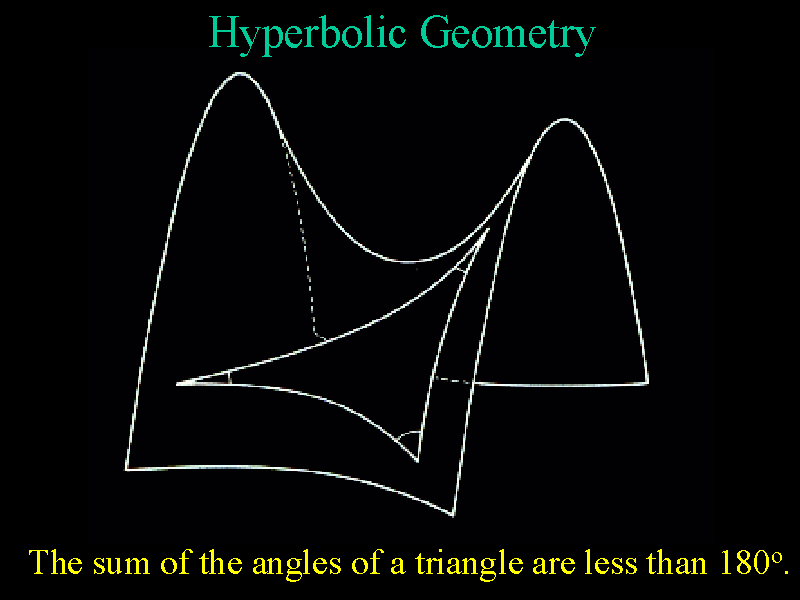
On a surface of negative curvature, the geometry is called hyperbolic geometry and the sum of the angles of a triangle is less than 180o.
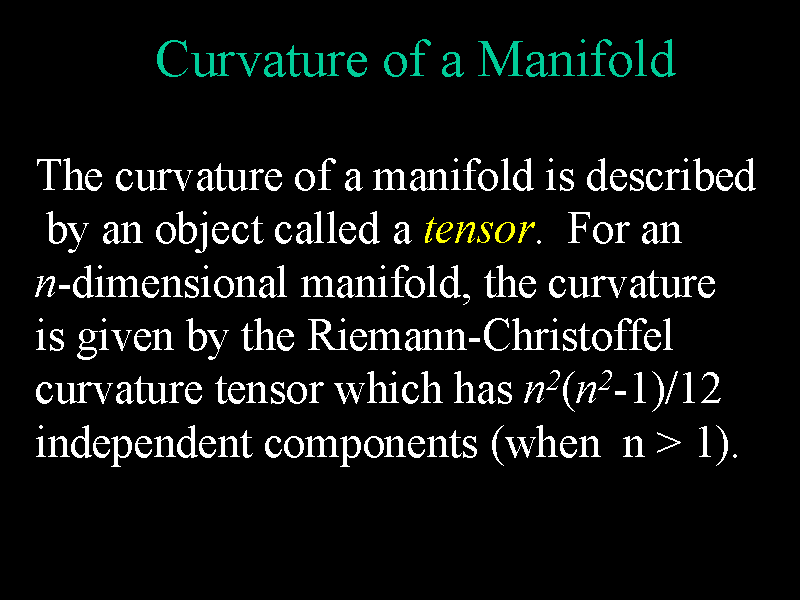
An n-manifold is, in a crude sense, an n-dimensional surface. For example, the spatial components of our universe form a 3-manifold and the Minkowski spacetime in which we live is a 4-manifold. The curvature of a manifold is not a single number, though. It is described by an object called a tensor. For an n-dimensional manifold, the curvature is given by the Riemann-Christoffel curvature tensor which has n2(n2-1)/12 independent components (when n>1). Einstein's general theory of relativity gives the components of this tensor (and therefore the curvature of spacetime) in the presence of mass.
Relativity and Black Holes
General Relativity
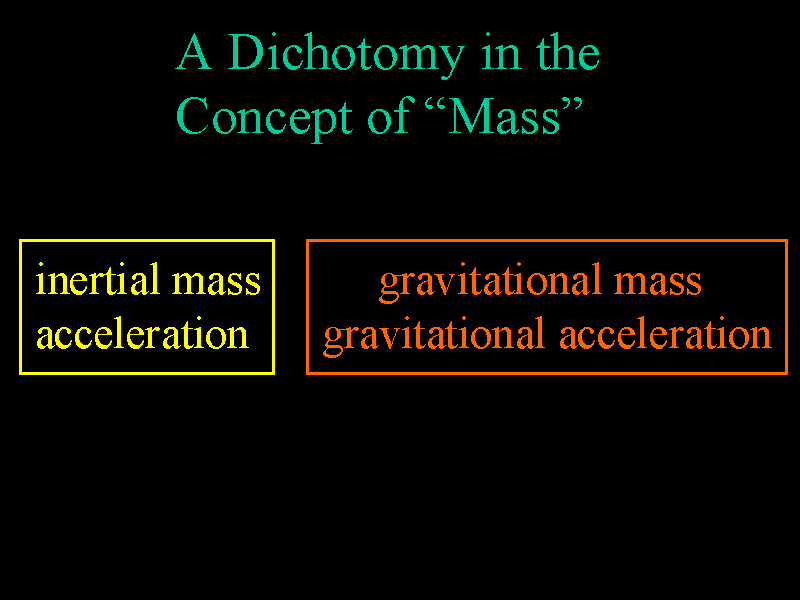
Einstein was bothered by what he saw as a dichotomy in the concept of "mass." On one hand, by Newton's second law (F=ma), "mass" is treated as a measure of an objects resistance to changes in movement. This is called inertial mass. On the other hand, by Newton's Law of Universal Gravitation, an object's mass measures its response to gravitational attraction. This is called gravitational mass. As we will see, Einstein resolves this dichotomy by putting gravity and acceleration on an equal footing.
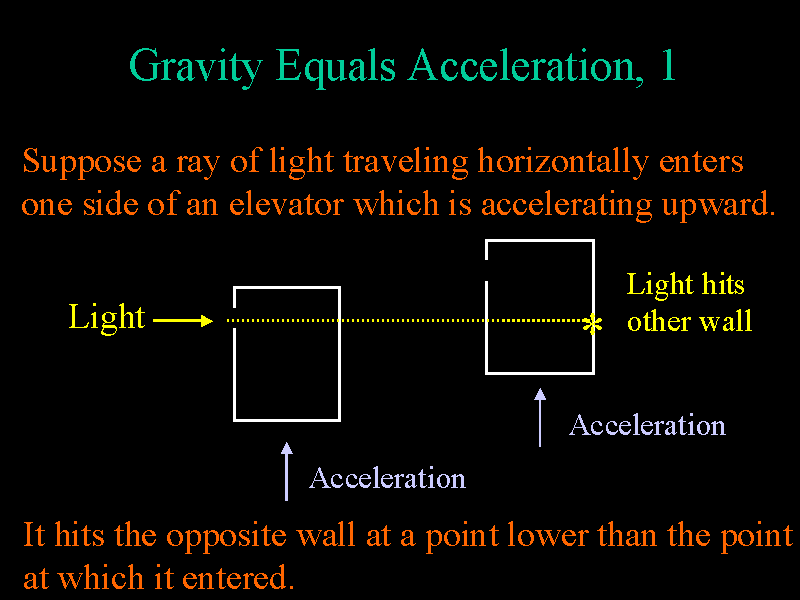
Consider an observer in a windowless elevator which is accelerating upward. Suppose a ray of light enters near the top of the elevator on one side. Then while the light travels from one side of the elevator to the other, the elevator will accelerate upward and therefore the light will hit the opposite wall at a point lower than the point at which it entered.

Next, suppose the elevator is stationary, but in a gravitational field. Then if we put gravity and acceleration on an equal footing, we would expect the same outcome of our experiment involving light rays. That is, if a ray of light enters near the top of the stationary elevator on one side, we expect the light to hit the opposite wall at a point lower than the point at which it entered the elevator. In a sense, the light "falls" under the influence of gravity. Notice, then, that an occupant of the elevator could not tell if he were in a rapidly accelerating elevator, or if he were in a stationary elevator in a gravitational field.

Einstein summarizes this in his Principle of Equivalence: There is no way to distinguish between the effects of acceleration and the effects of gravity - they are equivalent!

In our technical exploration of general relativity, we will adopt
Einstein's summation notation in which an index of summation appears in each
term both as a subscript and as a superscript and the sigma summation symbol
is omitted. Therefore, the sum
![]() becomes
just
becomes
just ![]() . The
double sum
. The
double sum
![]() becomes simply
becomes simply
![]() . The
range of the index of summation will be clear from the context (usually 0 to
3).
. The
range of the index of summation will be clear from the context (usually 0 to
3).

In our standard 3-dimensional Euclidean space, we measure the distance between two points as
![]()
If instead of using x, y, z to represent
coordinates, we use x1, x2, x3,
then with Einstein's summation notation, distance is calculated as
![]() where
where
![]() is the
Kronecker delta which takes on the value 1 if i and j are
equal and the value 0 if i and j are different.
is the
Kronecker delta which takes on the value 1 if i and j are
equal and the value 0 if i and j are different.

Instead of simply measuring the distance between points in spacetime, we
will be interested in differentials of the interval and the coordinates of
spacetime. In a "curved" spacetime, we will measure the quantity as
![]() . The
curvature of the space will be determined by the gij (which
are called metric coefficients) and the gij
will be functions of space, time, and mass distribution.
. The
curvature of the space will be determined by the gij (which
are called metric coefficients) and the gij
will be functions of space, time, and mass distribution.
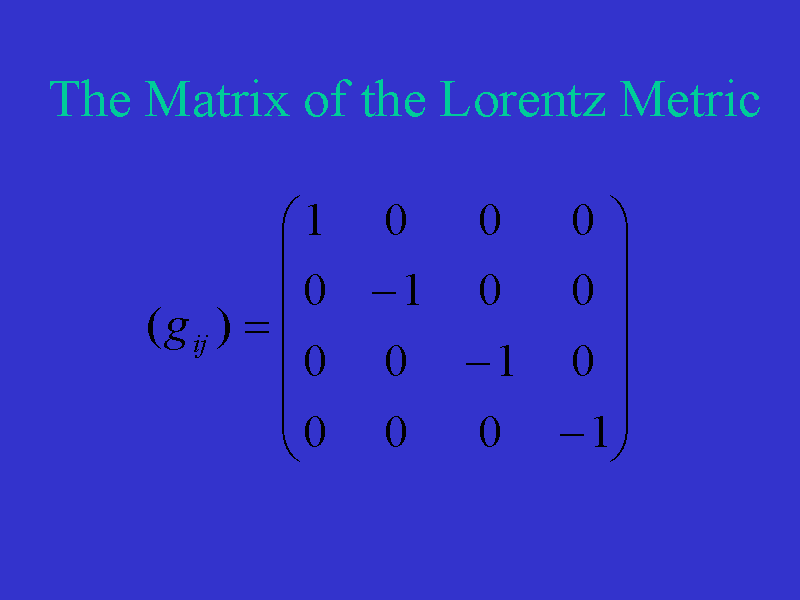
As we have seen, in the absence of matter and with (t,x,y,z) = (x0,x1,x2,x3) the metric coefficients determine the matrix of the Lorentz metric seen here.
Now let's introduce some of the notation required to understand Einstein's field equations.
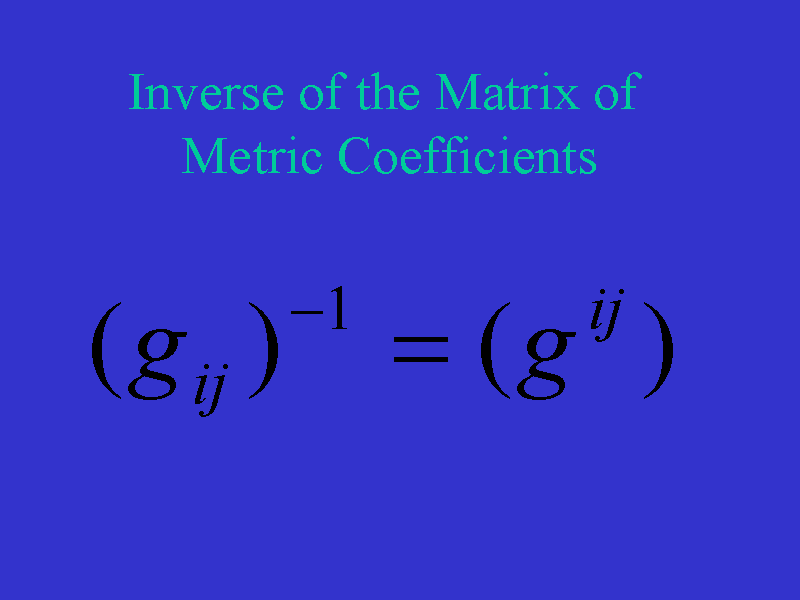
First, we define the entries of the inverse of the matrix of
metric coefficients as gij. The gij
and gij and their partial derivatives are used to define
the Christoffel symbols,
![]() .
.
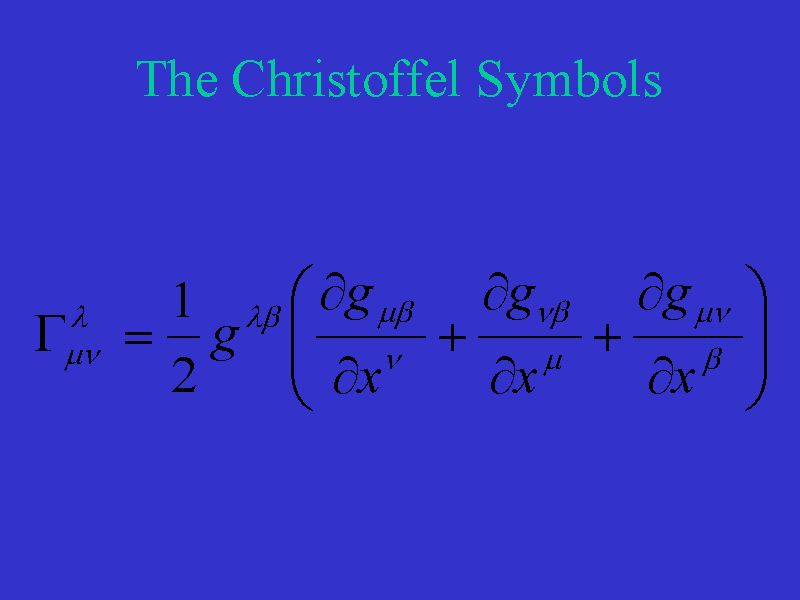
Notice that these are functions of the gij's and partial derivatives of the gij's:


The Ricci tensor is defined, in turn, in terms of the Christoffel symbols as seen here.
Einstein chose as his field equations of general relativity, the following:
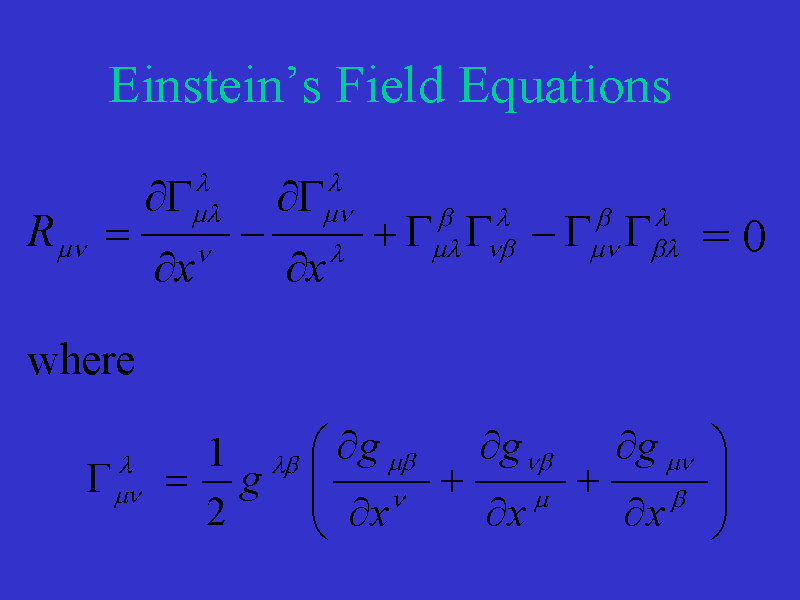
That is, he chose for his field equations to set the Ricci tensor equal to zero. Since mu and nu range from 0 to 3, there are 16 different equations here.
We can simplify this notationally as:

So we see that Einstein's field equations are a system of 16 second order partial differential equations in the 16 unknown functions gij.
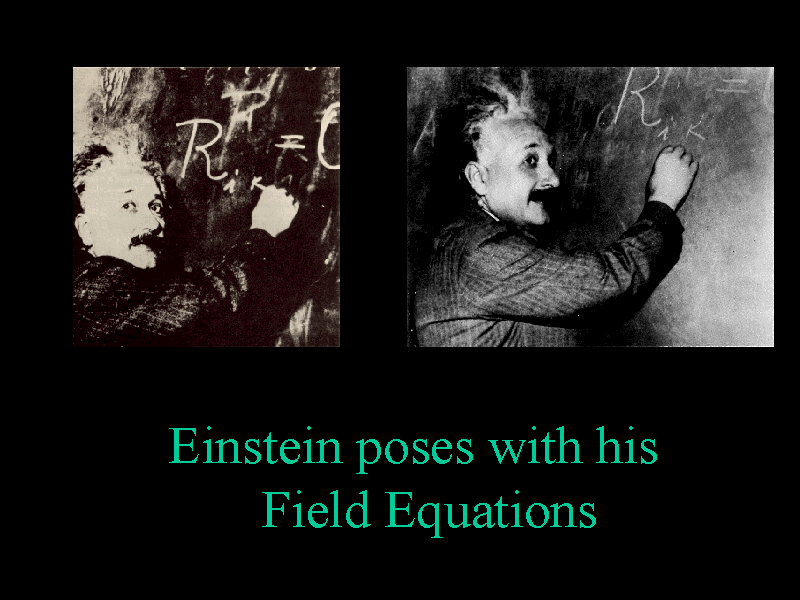
Here we see Einstein posing with his field equation. The gij determine the metric form of spacetime and therefore all {\it intrinsic} properties of the 4-dimensional spacetime in which we live. In particular, curvature is determined by the Riemann-Christoffel curvature tensor.
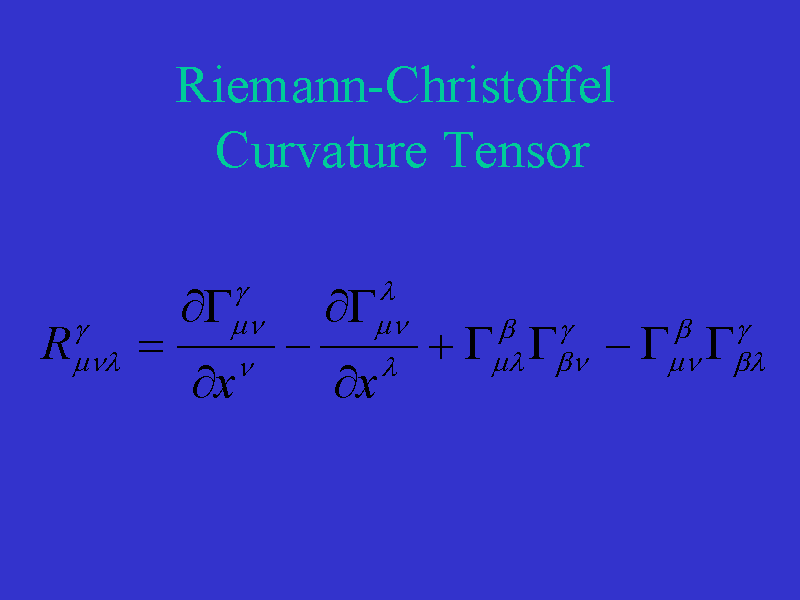
Notice that mu, nu, lambda, and gamma range from 0 to 3 and therefore the curvature tensor consists of 256 entries, only 20 of which are independent.
Hiçbir yazı/ resim izinsiz olarak kullanılamaz!! Telif hakları uyarınca bu bir suçtur..! Tüm hakları Çetin BAL' a aittir. Kaynak gösterilmek şartıyla siteden alıntı yapılabilir.
The Time Machine Project © 2005 Cetin BAL - GSM:+90 05366063183 -Turkiye / Denizli
Ana Sayfa /
index /Roket bilimi /![]() E-Mail /CetinBAL/Quantum Teleportation-2
E-Mail /CetinBAL/Quantum Teleportation-2
Time Travel Technology /Ziyaretçi Defteri /UFO Technology/Duyuru